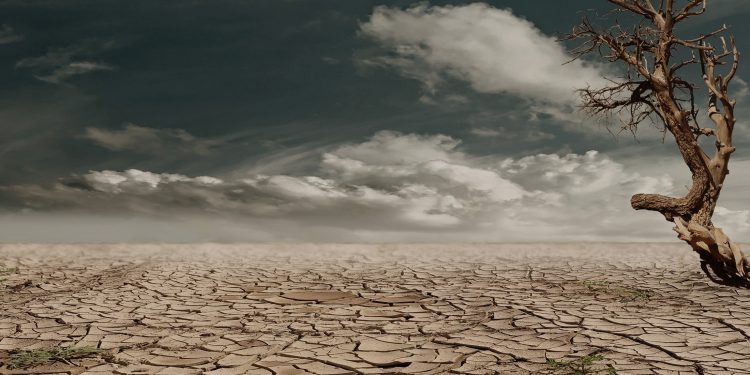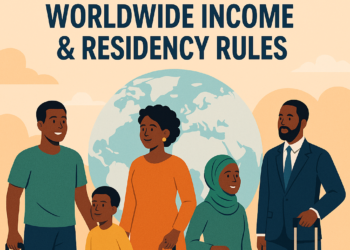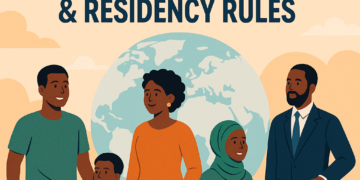The impact of climate change is not distributed equally around the world, and Africa finds itself disproportionately affected by a crisis it contributed the least to. In the midst of this, the world make a show of their pretence to solving the problem.
This narrative explores how Africa bears the brunt of climate change while scrutinizing the contributions, or lack thereof, from both developed and developing nations in alleviating the continent’s struggles.
What Africa is Faced with and Countries Most Affected
Africa, the world’s fastest-growing continent, is paradoxically the most vulnerable to the adverse effects of climate change. Despite contributing a mere fraction of global greenhouse gas emissions, Africa endures the harshest consequences.
As U.S. climate envoy John Kerry highlighted, 85% of the 20 countries most severely impacted by the climate crisis are in Africa.
This vulnerability is exacerbated by climate-induced food insecurity and economic losses, which, according to Kenyan President William Ruto, shrink the continent’s economic growth by 5-15% annually.
Several African countries are disproportionately affected by climate change due to a range of vulnerabilities. Here are some of the most affected nations and their specific challenges:
Nigeria: As one of Africa’s most populous nations, Nigeria faces multiple climate threats. These include recurrent droughts in the north, leading to food insecurity, and severe flooding in the south, displacing communities. Rising sea levels are also a concern along the coastal regions.
Kenya: Kenya grapples with erratic rainfall patterns and prolonged droughts that impact its agriculture, the backbone of its economy. These conditions result in water scarcity, crop failures, and livestock deaths, affecting food security and livelihoods.
Somalia: Somalia is prone to extreme weather events, including droughts and floods. These events often lead to food shortages, displacement, and conflict over scarce resources. The country’s vulnerability is exacerbated by its fragile governance and security situation.
South Sudan: Already grappling with conflict and political instability, South Sudan faces climate-related challenges such as erratic rainfall, which disrupts farming and contributes to food insecurity. Flooding is also a recurring issue.
Ethiopia: Ethiopia experiences recurrent droughts, affecting agricultural productivity and food availability. The country’s high population density exacerbates the impact of these climate shocks, leading to food and water scarcity.
Sudan: Sudan faces a multitude of climate-related challenges, including desertification in the north, flooding along the Nile, and increased temperatures. These factors contribute to resource scarcity and can exacerbate conflicts.
Malawi: Malawi is highly vulnerable to climate change due to its dependence on rain-fed agriculture. Erratic rainfall patterns and prolonged dry spells lead to crop failures, food insecurity, and economic losses.
Senegal: Coastal erosion and rising sea levels threaten Senegal’s low-lying coastal regions, displacing communities and causing land loss. Erratic rainfall patterns also impact agriculture and food security.
Uganda: Uganda experiences both droughts and floods, affecting agriculture and water resources. These climate extremes contribute to food insecurity and displacement of communities.
Mozambique: Mozambique faces a double threat of cyclones and coastal flooding due to its long coastline. Cyclones, such as Cyclone Idai in 2019, have caused extensive damage and displacement.
These African countries share vulnerabilities that include dependence on agriculture, exposure to extreme weather events, water scarcity, and limited resources to adapt to and mitigate the effects of climate change.
Addressing these challenges requires not only national efforts but also international cooperation, funding, and technology transfer to build resilience and ensure sustainable development in the face of a changing climate.
Global Responses: A Mixed Bag
In response to Africa’s climate predicament, nations worldwide have made various commitments. The European Union pledged €1 billion to make African markets more attractive for foreign energy investors.
The United States pledged $30 million to address climate-induced food insecurity in Africa. These efforts are commendable but fall significantly short of what’s needed.
A recent report by the Climate Policy Initiative estimates that Africa requires $277 billion annually to achieve its 2030 climate goals. However, the current annual inflow is a mere $30 billion.
This glaring disparity underscores the inadequate contributions from the international community.
Critics argue that carbon offset schemes, like the $450 million deal from investors in the United Arab Emirates, often serve Western corporations’ interests more than they mitigate carbon emissions.
Activist organizations have called for climate reparations and debt relief as more equitable solutions to address Africa’s climate challenges.
The Road Ahead
As Africa continues to grapple with the severe consequences of climate change, there’s a growing urgency for developed and developing nations to step up their efforts.
The African Climate Summit signifies an opportunity for the continent to lead on climate issues, but it also highlights the need for substantial and equitable support from the global community.
Achieving a balance between economic development and environmental stewardship remains a monumental task, one that requires a collective and determined effort.
The climate crisis in Africa is far from over, and its severity will likely escalate unless substantial global action is taken.
The upcoming COP28 in Dubai presents a crucial platform for African leaders to voice their concerns and press for more substantial commitments from the international community.
The disparity between contributions and needs must be addressed urgently to prevent Africa from shouldering the burdens of climate change alone.












